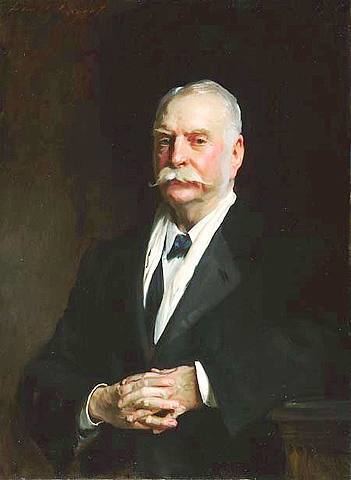Name James 1st | Parents James Kitson Role British Politician | |
 | ||
Died March 16, 1911, Paris, France | ||
James Kitson, 1st Baron Airedale PC, DSc (22 September 1835 – 16 March 1911) was a British politician of the Liberal Party, first a Member of Parliament and then a peer. He was known as Sir James Kitson from 1886, until he was elevated to the peerage in 1907. He was a prominent Unitarian in Leeds.
Contents
He was the younger son of James Kitson of Elmete Hall (1807–1885), a locomotive manufacturer who founded Kitson and Company, and his wife Ann Newton. James (Jnr) went to school in Wakefield and studied chemistry and natural sciences at University College London.
Career
With his elder brother, Frederick William (b.1829), James (Jnr.) developed the iron foundry that their father bought for them into a large company; Monkbridge Iron and Steel Works. Its gave James the time, money and influence to pursue other interests including politics, becoming President of the Leeds Liberal Association, and running the election campaign for William Ewart Gladstone. He became an MP in 1892, continuing to 1907, supporting education, Irish home rule, and old age pensions. Kitson was a member of the Institution of Civil Engineers and the Institution of Mechanical Engineers. He supported the Mechanics' Institute and the Yorkshire College, the forerunner of the University of Leeds, which awarded him an honorary doctorate (DSc) in 1904. He was the first Lord Mayor of Leeds (1896 and 1897).
The Kitsons were closely linked to Mill Hill Chapel, the Unitarian church on Leeds City Square made famous by the ministry of Joseph Priestley a century before. In 1897 he paid for an extension to the vestry. William Morris designed a window which was dedicated to Kitson's mother Ann, who died in 1865. After his death, Archibald Keightley Nicholson created a window in his name, representing the continuation of Christianity. In the early twentieth century the chapel was described as having "a small but politically active and very influential congregation led by the Revd Charles Hargrove and Sir James Kitson".
In 1885 Kitson purchased Gledhow Hall and estate in Gledhow, Leeds, between Chapel Allerton and Roundhay. The hall was the subject of a painting by J.M.W. Turner. Kitson redecorated the hall and entertained lavishly, including playing host to Prime Minister William Gladstone and his son, Herbert, who was a witness at Kitson's second marriage in 1881, to Mary Laura Smith. He commissioned Burmantofts Pottery to create an elaborate bathroom of faience (glazed architectural terra-cotta) in honour of a visit from the Prince of Wales (later Edward VII) circa 1885.
Kitson was created a baronet on 28 August 1886, and on 17 July 1907 was raised to the peerage as the first Baron Airedale, of Gledhow in the West Riding of the County of York. He died in Paris on 16 March 1911. His body was brought to Leeds for a funeral and burial at Roundhay.
Family
He married (1) Emily Christina Cliff, on 20 September 1860. They had five (surviving) children.
He married (2) Mary Laura Smith, on 1 June 1881. They had two children.
Lord Mayors
His older brother's son, Frederick James Kitson of Gledhow Grove was Lord Mayor of Leeds in 1908. He died in 1935. His wife, Florence, died on 26 April 1943, the year that the lord mayor of Leeds was Jessie Beatrice Kitson (b.1877) - his first cousin. Jessie Kitson was the daughter of his younger brother, John Hawthorn Kitson (d.1899). Like his father, niece and nephew, James Kitson (Jnr.) had been Mayor/Lord Mayor of Leeds: in 1896 and 1897.
